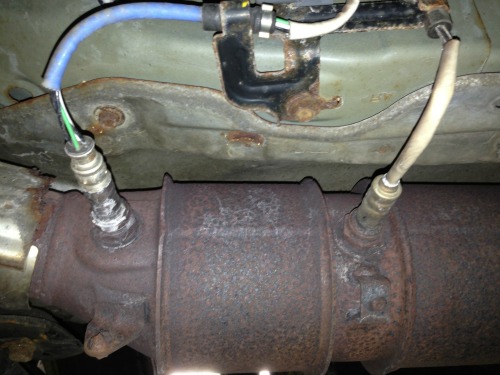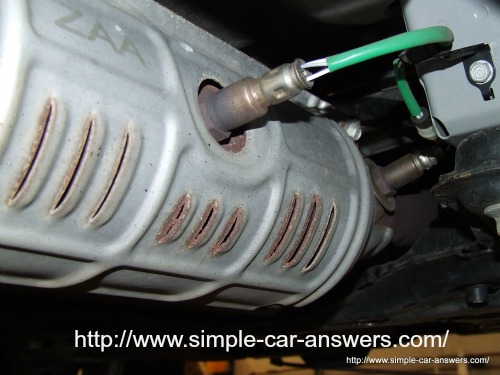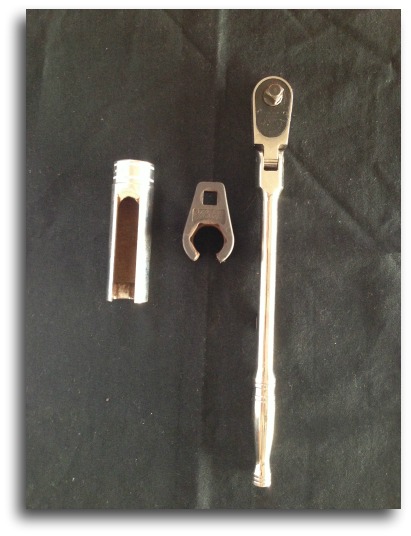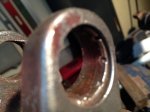This Site Was Built With You In Mind!
What is a Bad Oxygen Sensor?
by Eddie Carrara
Auto computer codes or diagnostic trouble codes (DTC's) are stored in your vehicle's computer when there is a problem with your car's engine or emission controls.
Car manufacturers in the US from 1981 to 1995 built automobiles with a self diagnostic system call OBD1 (On-board diagnostics one). The OBD1 system monitored the automotive manufacturer's specific systems in all vehicles. If there were a fault with one of the components, it would send a signal to the computer, which would activate the '' CHECK ENGINE'' light.
Think you might have a bad oxygen sensor? Virtually every car produced since the early 1980s contains an oxygen sensor that measures the amount of oxygen in the exhaust. The oxygen sensor then sends a signal to the engine's computer to adjust the fuel mixture delivered to the engine.
The oxygen sensor works by sending information to your vehicle's engine control unit (ECU) to help your car run efficiently and reduce emissions.
Symptoms of a Bad Oxygen Sensor
When you have a bad oxygen sensor, your vehicle will run less efficiently. It can sometimes have a low idle, erratic jerking at steady throttle, difficult starting problems, cause the check engine light to come on, and generate high fuel consumption.
Thus, when oxygen sensor failure is determined (When the check engine light comes on and sets an O2 sensor code), the sensor must then be replaced, a costly repair if you rely on a garage to do the work for you.
However, replacing an oxygen sensor is a job that you can do yourself (as long as the O2 sensor condition is good and not rusted into the pipe or catalytic converter), thereby saving you precious time and money. Let's take a closer look at just what an oxygen sensor does and the steps you can take to do the work yourself.
What is an Oxygen Sensor?
A correctly functioning oxygen sensor works like this: An O2 sensor location is into the exhaust pipe either before the catalytic converter or into the catalytic converter itself. The O2 sensor's tip located inside of your exhaust pipe detects the percentage of oxygen in the exhaust.
If the mixture is too rich (too little oxygen) or too lean (too much oxygen), then the oxygen sensor sends a signal to the ECU, telling it to adjusts the amount of fuel entering your engine accordingly.
The wrong mix of gasoline and oxygen can increase pollutants that exit through the exhaust, thereby harming the environment, as well as potentially causing your catalytic converter to fail or even damage your engine.
So, a properly working oxygen sensor is a necessity for any vehicle. Neglecting to replace a bad oxygen sensor will usually result in damage to your catalytic converter, costing you an extra $500 -$1000 in repairs, if not more.
Oxygen sensor Failure
There are some clear signs that your oxygen sensor is no longer functioning. They can include:
- Check engine light on
- A rotten egg odor is emitting from the exhaust.
- A reduction in fuel economy.
- Your catalytic converter fails unexpectedly.
This is an O2 sensor on a Honda Pilot
- Exhaust emissions reach undesirable levels.
- Your engine surges, hesitates, skips and bucks.
Replacing and Diagnosing an Oxygen Sensor
You can diagnose the problem yourself if you have access to the right tools, including a digital voltmeter or an OBD2 diagnostic tool. In today's market, you can have an OBD2 scanner or code reader right on your iPhone or any Smartphone for that matter (Click here to go to Auto Computer Codes for more information).
If it has failed, then consider ordering your replacement part online through a reliable wholesaler such as Amazon or one of their vendors to obtain a high-quality OEM or aftermarket part at a reasonable price and with an easy return policy if needed.
Once your part has arrived, all you need is one or two automotive wrenches or oxygen sensor sockets to accomplish the job. I recommend using the heavy-duty low profile O2 socket because it's short and durable. It can easily access almost any oxygen sensor. It will not spread apart like the tall chrome O2 sensor socket. Again, reference your car's manual for exact instructions.
With the abundance of sensors and technical gadgetry on today's vehicles, it can seem somewhat intimidating to do the work yourself, especially if you need to transfer the connector from the failed oxygen sensor to the new one. I recommend moving one wire at a time instead of removing all the wires at once.
Fortunately, an oxygen sensor is one of the more manageable parts to replace, so if you do the work yourself, you will save time, money, and gain an important sense of achievement. Go ahead, you Weekend Warrior, you can do it!
Oxygen Sensors and Tools

These two O2 sensors on this Honda CRV are pretty rusted.
comments powered by DisqusLeave Bad Oxygen Sensor page and return to the homepage for Simple Car Answers.



New! Comments
Do you have a question about your car? Leave me a comment in the box below, I bet I can answer your question better than your mechanic.